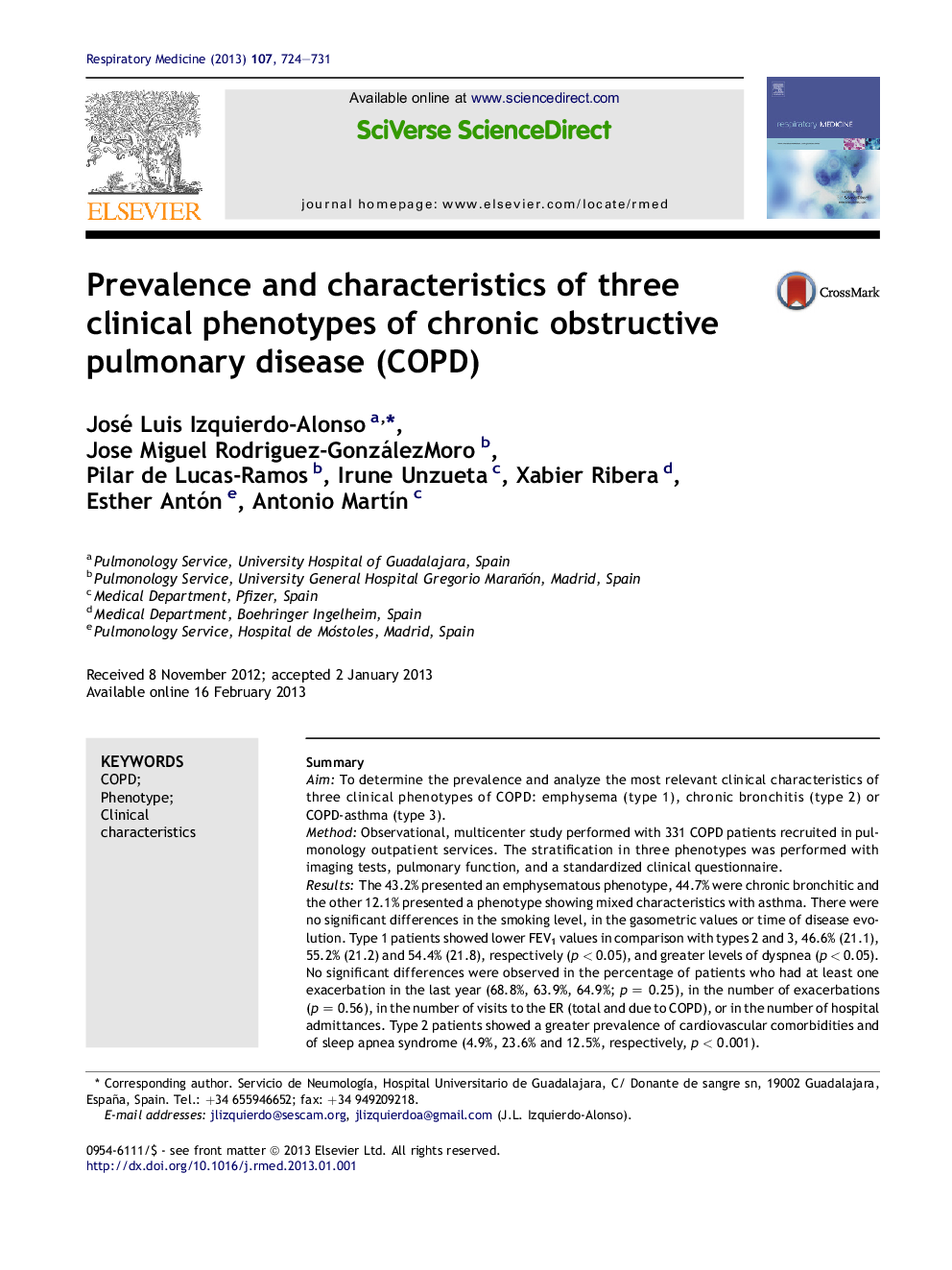| Article ID | Journal | Published Year | Pages | File Type |
|---|---|---|---|---|
| 4210637 | Respiratory Medicine | 2013 | 8 Pages |
SummaryAimTo determine the prevalence and analyze the most relevant clinical characteristics of three clinical phenotypes of COPD: emphysema (type 1), chronic bronchitis (type 2) or COPD-asthma (type 3).MethodObservational, multicenter study performed with 331 COPD patients recruited in pulmonology outpatient services. The stratification in three phenotypes was performed with imaging tests, pulmonary function, and a standardized clinical questionnaire.ResultsThe 43.2% presented an emphysematous phenotype, 44.7% were chronic bronchitic and the other 12.1% presented a phenotype showing mixed characteristics with asthma. There were no significant differences in the smoking level, in the gasometric values or time of disease evolution. Type 1 patients showed lower FEV1 values in comparison with types 2 and 3, 46.6% (21.1), 55.2% (21.2) and 54.4% (21.8), respectively (p < 0.05), and greater levels of dyspnea (p < 0.05). No significant differences were observed in the percentage of patients who had at least one exacerbation in the last year (68.8%, 63.9%, 64.9%; p = 0.25), in the number of exacerbations (p = 0.56), in the number of visits to the ER (total and due to COPD), or in the number of hospital admittances. Type 2 patients showed a greater prevalence of cardiovascular comorbidities and of sleep apnea syndrome (4.9%, 23.6% and 12.5%, respectively, p < 0.001).ConclusionsIn COPD, emphysematous patients present worse pulmonary function and greater dyspnea, although there were no differences in the use of hospital health care resources. The greater comorbidity in Group 2 patients may require specific strategies in this subgroup of patients.
